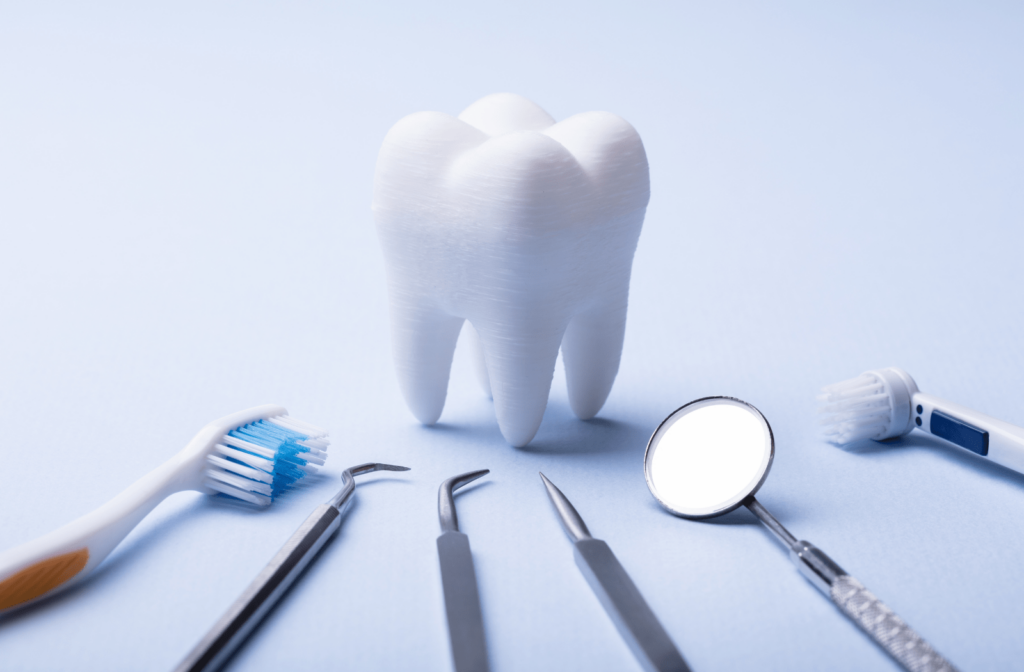Our teeth are extremely hard, but over time they weaken if we don’t care for them properly. Additionally, external forces can damage them by chipping or breaking them. This article will discuss a couple of ways your dentist can repair your teeth.
You’ve likely heard of fillings and crowns, but two other treatment options called inlays and onlays are additional ways that a dentist can fix damaged teeth. Neither is necessarily better than the other because they each have specific uses that are determined by the extent of the damage and the area that’s damaged.
What is an Inlay?
When tooth decay starts in the center of your tooth and is caught before it has had a chance to cause extensive damage, an inlay can sometimes be used to fix it. An inlay is a pre-moulded filler typically made from gold, resin, or porcelain.
Difference Between an Inlay and a Filling
Although they are similar, fillings and inlays are different. One significant difference is the size of the cavity they fix. Typically an inlay is used to repair a much larger space in the tooth. Additionally, studies revealed that inlays can increase the strength of your tooth. In contrast, a filling weakens it in some cases.
What is an Onlay?
Like inlays, onlays are used to repair cavities. Where they differ is the area of the tooth they are used. An onlay is used when the damage is down the side of the tooth or over its cusp (the sharp edges).
In addition to repairing cavities, an onlay is an effective way of treating other issues such as cracks, fractures, and chips in the tooth. Many people prefer to go with porcelain or resin for aesthetic reasons because they look closer to the tooth’s natural colour. However, metal onlays will last longer.
Difference Between an Onlay and a Crown
Onlays and crowns cover similar parts of the tooth. However, a crown covers the entire biting surface of the tooth and usually extends down to the gum line. A common use for crowns is to seal the tooth after a root canal treatment, but they can also be used to improve the tooth’s aesthetic appeal.
Maintaining Healthy Teeth to Avoid Inlays or Onlays
If you maintain a healthy mouth, your risk of needing a treatment like onlays or inlays is drastically reduced. Here are several things you can do to keep your teeth and gums healthy:
Good Oral Hygiene
Oral hygiene comes in many forms. The most obvious way of keeping your teeth clean is brushing at least twice a day with dentist-approved fluoride toothpaste, preferably after every meal. In addition, flossing at least once a day is a good practice. Using a fluoride mouthwash once a day is also a great way to strengthen your teeth’s enamel.
Note on brushing: Be careful not to brush too hard or too much. Over time, excessive brushing can cause damage to the enamel on your teeth, which is what you’re trying to prevent. Try and find a balance that keeps your teeth free from leftover food.
Avoiding Certain Things
It’s common knowledge that sugary or acidic food and drink can cause damage to our teeth over time. Additionally, smoking or chewing tobacco are also very damaging to your oral health. Excessive alcohol consumption can also damage your teeth because it dries your mouth out and allows bacteria and plaque to accumulate freely.
Signs You May Need an Inlay or Onlay
As a general rule, cavities or tooth damage are two primary reasons you’ll need one of these treatments. However, there are a few specific warning signs you can look out for that may prompt a visit to the dentist:
- Obvious tooth damage: This could be chips or cracks in your tooth. In some cases, this should result in an emergency visit to the dentist to avoid more extensive damage.
- Cavity signs: A cavity often begins as a small dark spot with a rougher texture on your tooth. If left untreated, you may need more than a simple filling.
- Cracked filling: If a cracked filling is left, the tooth may decay further, which could result in requiring an inlay or onlay.
- Toothache: New pain in your teeth could be a warning sign that there is a problem. It may not result in extensive damage right away, but you should get it checked regardless. In addition to toothaches, sensitivity to hot or cold can also indicate an issue.
Finding Out More About Restorative Dentistry
The best way to prevent the need for extensive restorative dentistry procedures is by seeing your dentist regularly. The Canadian Dental Association recommends that a person gets a dental exam every six months because tooth problems can develop quickly. However, your dentists may recommend an alternative schedule based on your particular needs.If you’re noticing any of the above signs, give our office a shout. Upper Gage Dental Center staff are happy to answer your questions and book you in to see one of our dentists.



